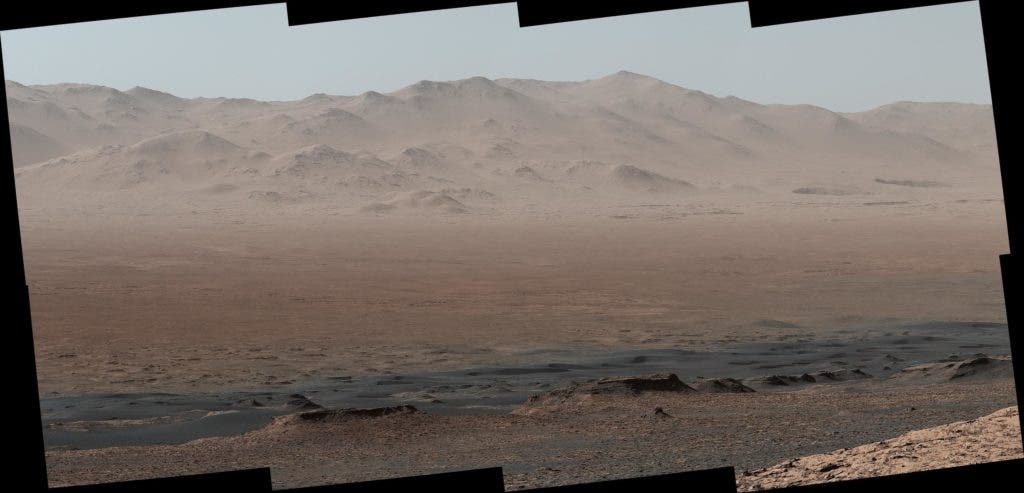Since its epic touchdown on the Red Planet in 2012, Curiosity has driven an 11-mile (18-kilometer) route from its landing site inside Gale Crater to the huge crater’s northern rim. Perched from this vantage point, the rover captured this astonishing panoramic view that not only features the whole enterprising route but also shows much of the crater’s horizon view.

The component images of the panorama were shot three months ago by the rover’s Mastcam from the northern edge of the Vera Rubin Ridge. Meanwhile, the rover has approached the southern edge of the ridge, examining outcrops along the way.
Clear skies typical of Martian winters allowed the rover to shoot distant details, such as a hill on the northern horizon which was strikingly 50 miles (85 kilometers) away from the rover. The tall mountains you can see surrounding the rover are actually the crater’s walls, some as tall as 1.2 miles (2 kilometers). One can only imagine the size and the force of the impactor that formed the 96-mile basin around 3.8 billion years ago.
Thought your holiday panoramas were cool?
“Even though Curiosity has been steadily climbing for five years, this is the first time we could look back and see the whole mission laid out below us,” said Curiosity Project Scientist Ashwin Vasavada of NASA’s Jet Propulsion Laboratory, Pasadena, California.
“From our perch on Vera Rubin Ridge, the vast plains of the crater floor stretch out to the spectacular mountain range that forms the northern rim of Gale Crater.” The rover photographed the scene shortly before northern Mars’ winter solstice, a season of clear skies, gaining a sharp view of distant details.

In case you notice something weird about these pictures, according to NASA, the panorama “has been white-balanced so the colors of the rock materials resemble how they would appear under daytime lighting conditions on Earth.”
In the annotated version featured below you can see Curiosity’s plotted route from its landing site to Yellowknife Bay (where the rover found evidence of an ancient freshwater-lake environment), all the way through Darwin, Cooperstown, and then Kimberly, Namid Dune, Murray Buttes, Ireson Hill, before crossing the tricky Bagnold Dunes to reach Vera Rubin Ridge.

The Curiosity team received the new images from a relay-link with NASA’s MAVEN orbiter, which beamed back over a gigabit of data in one single relay session — that’s the first time in history that much data has been sent in one go from Mars. And to think, all that data was sent from millions of miles away. Take that, Comcast!
“MAVEN definitely has the potential to move lots of data for us, and we expect to make even more use of it in the future,” said JPL’s Roy Gladden, manager of NASA’s Mars Relay Network Office.
Next, the Curiosity mission is scheduled to drill samples from Vera Rubin Ridge before proceeding to Clay Unit. Curiosity’s drill has been suspended due to a hardware malfunction since 2016 so it will be very exciting how the mission pans out.


